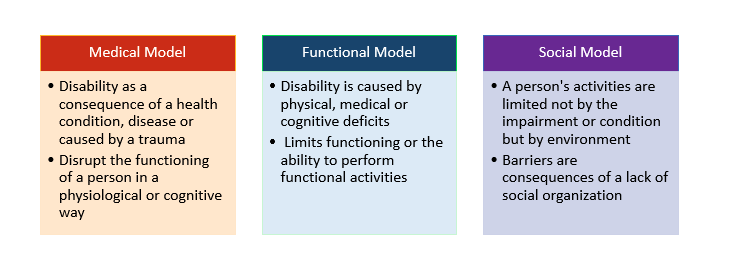|
Getting your Trinity Audio player ready... |
Alright, if you’ve been following my journey, you know I’ve been in CPACC exam prep since mid-October, and the big day is just around the corner—15 days to go!! 😅
I’ve heard the exam questions can be tricky with wording that seems designed to trip you up, and if you’re anything like me, the mere thought of memorizing content makes my brain want to tap out.
But don’t sweat it! I structure this content following the BOK’s recommended study tasks to keep us on track. Sooo let’s dive in..
Study Tasks Breakdown
- Identify prominent theoretical models of disability.
- Describe their basic concepts and understand their strengths and weaknesses.
- Identify which models align most closely with the principles of accessibility and universal design.
- Apply the models to example scenarios in the lives of people with disabilities.
1. Identifying Prominent Theoretical Models of Disability
Let’s get acquainted with the big players:
- Medical Model
- Social Model
- Biopsychosocial Model
- Economic Model
- Functional Solutions Model
- Social Identity or Cultural Affiliation Model
- Charity Model
2. Describing Basic Concepts, Strengths, and Weaknesses
Time to break these down:

- Medical Model: This model views disability as a personal health condition that needs medical intervention, something to be “fixed.”
- Strengths: Addresses biological causes.
- Weaknesses: Ignores societal and environmental barriers.
- Social Model: Sees disability as a result of societal barriers.
- Strengths: Highlights the need for societal change.
- Weaknesses: May overlook individual medical needs.
- Biopsychosocial Model: Combines biological, psychological, and social factors.
- Strengths: Offers a holistic view.
- Weaknesses: Can be complex to apply.
- Economic Model: Defines disability by its impact on a person’s ability to work.
- Strengths: Recognizes economic implications.
- Weaknesses: Can be stigmatizing.
- Functional Solutions Model: Focuses on overcoming limitations through innovation.
- Strengths: Promotes practical solutions.
- Weaknesses: May not address underlying societal issues.
- Social Identity or Cultural Affiliation Model: Views disability as a personal identity within a community.
- Strengths: Fosters a sense of belonging.
- Weaknesses: May exclude those who don’t fit the group’s norms.
- Charity Model: Sees people with disabilities as needing help.
- Strengths: Encourages assistance.
- Weaknesses: Can be patronizing and focus on short-term fixes.
3. Identifying Models of Disability Alignment with Accessibility and Universal Design
The Social Model aligns most closely with accessibility and universal design principles, emphasizing the removal of barriers and creating inclusive environments. The medical, economic, and charity models, in particular, do not prioritize the creation of universally accessible and usable environments or products. In contrast, the social, functional solutions, and biopsychosocial models tend to align more closely with these principles by addressing barriers and promoting inclusive solutions.
4. Applying Models of Disability to Example Scenarios
Let’s put theory into practice:
- Scenario 1: A student using a wheelchair can’t enter a building with steps.
- Medical Model: Focuses on the student’s inability to walk.
- Social Model: Targets the steps as the barrier; suggests installing a ramp.
- Scenario 2: A person who is blind can’t read a printed menu in a restaurant.
- Medical Model: Highlights the vision impairment.
- Social Model: Points out the lack of alternative formats; suggests providing braille or digital menus.
- Scenario 3: An individual with a cognitive disability struggles with an online application form.
- Medical Model: Emphasizes cognitive deficits.
- Social Model: Criticizes the form’s poor design; recommends simplifying the interface.
Final Thoughts
Remember, the CPACC exam isn’t just about rote memorization. It’s about understanding these Models of Disability deeply and knowing how to apply them. Keep questioning, keep challenging, and don’t let the anxiety win. You’ve got this! 💪
You also can read my previous post about the theoretical models and how they align with web accessibility. (Read Post Models of Disability: Beyond Compliance to Real Inclusion)